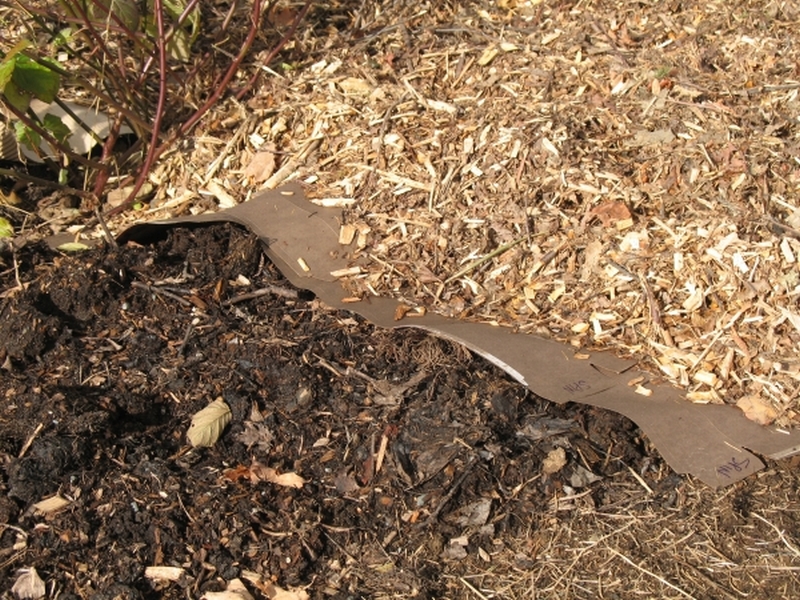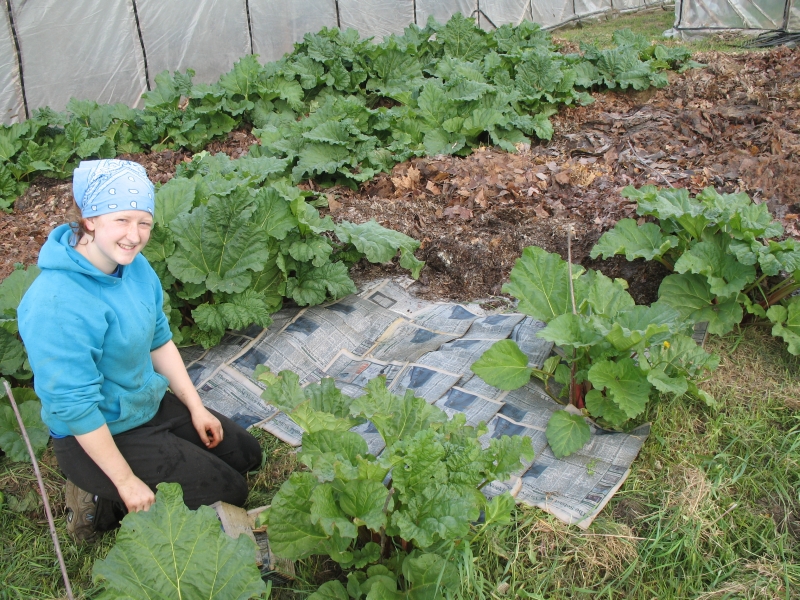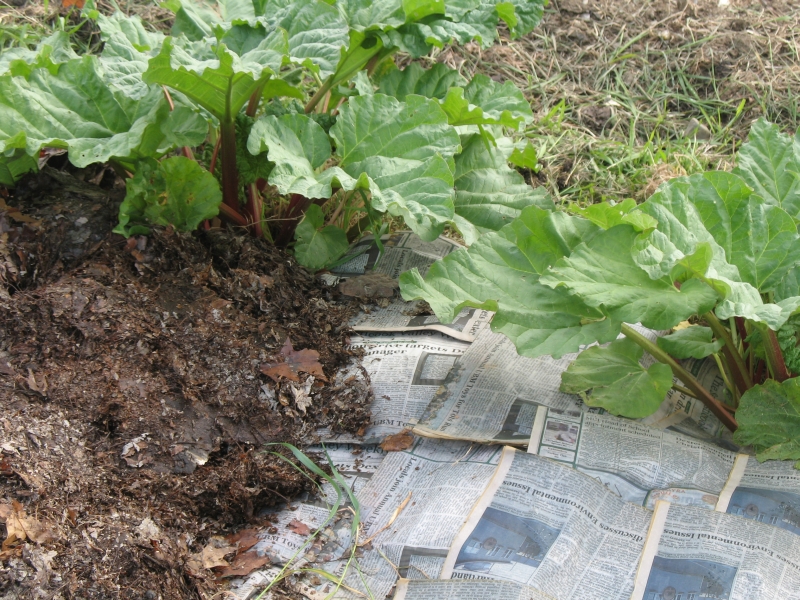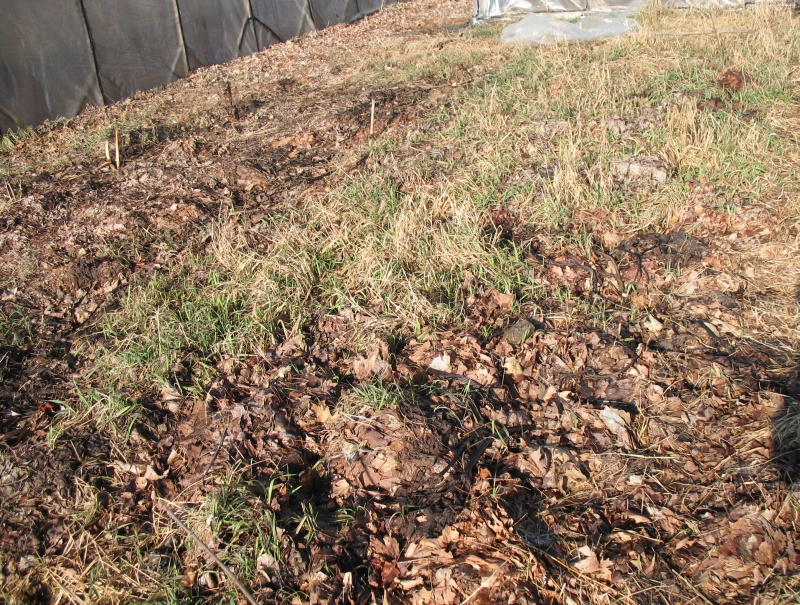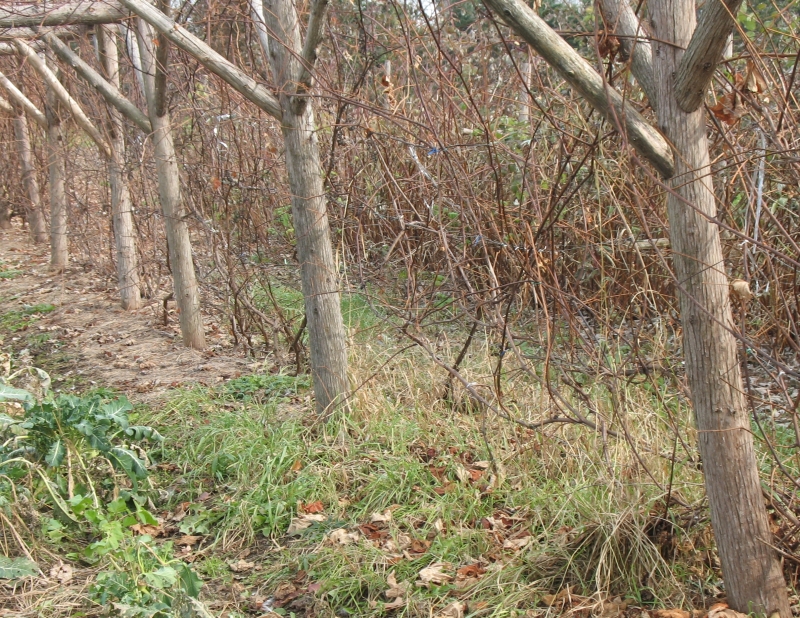|
|
||
Combatting
|
 |
|
|
Click on photos to enlarge. In case you are not familiar with it, quackgrass is ever-present in Maine, especially in pastures and fields. It spreads via rhizomes, or underground stems, which sprout up new spears of grass every few inches. It can withstand frequent cutting, grazing or mowing and keeps coming back. Like most grasses, it loves cool wet weather. When the gardener tries to pull it up, the rhizomes break off in the ground, making it very difficult to eradicate that way. Tilling breaks the rhizomes into hundreds of small pieces, each of which sprouts a new plant, although any left entirely on the surface in dry weather will dry out and die in a few days. When tilling quackgrass in the garden, it is advisable to go very slowly, thus breaking the rhizomes into the smallest possible pieces. That way, although there will be more sprouts of grass emerging, there will be less energy per rhizome piece, so subsequent control become easier. When the new sprouts have exactly three leaves on them, the rhizome has put out a maximum amount of energy without getting much back yet. This is the point at which pulling or re-tilling works best. But what about quackgrass in perennial crops where tilling is not an option? Over the years we have discovered several mulching methods which do not work. These include mulching with new grass clippings, hay, leaves, pine needles, or wood chips. They do not work because the energy reserves the quackgrass allow it within a few months to grow its sharp pointed rhizomes upward to the light, and then sprout leaves of grass to the point that it is now growing stronger than ever. But that doesn’t mean that mulching doesn’t work, it just means that a simple layer of mulch doesn’t work. What we have developed over the past ten years is a method that does work, and we use several variations of it.
Another thing we have learned is that, although the two layer system works well, the fact that the newspaper layer is biodegrading at the same time the quackgrass is trying to poke through it means that sometimes some of the quackgrass will get through. Other times witch grass will be invading from the edges of the mulched patch. This will be evident within a few months, and usually happens only in a few patches here and there. What we have learned to do is to apply the very same method again the following year. The second time, the grass is weaker and sparser, and the mulching even more effective. Once you’ve killed the quackgrass, it is gone, and won’t be coming back. However, it may be forever invading from the edges of your planting, so re-applying the two-layer mulch may become an annual or biennial necessity, at least in certain patches.
We are always saving pizza boxes, cereal boxes and any cardboard boxes we come across. Mulching the eighty foot long Blackberry Garden this October used up two years worth of cardboard hoarding. Better to use too much than too little. Last year we were fortunate enough to have someone deliver us a van of bundled newspapers, and to date we’ve used about a third of those. What is our preference for the top layer? Generally whatever is available. During the summer months we are mowing the fields every few weeks so we have a good supply of young hay. Sometimes we have a large pile of wood chips that we make ourselves or is delivered to us. And as you can see in our Using Mulches article, we get pine needles, hay and leaves delivered to us every fall by the good residents of Pittsfield. For each of these we have other uses as well, besides using them for the top layer in our quackgrass battle. So whenever we are applying our two-layer mulch, we look around to see what’s in surplus for the top layer. Chips or sawdust as a top layer will last the longest, although for mulching quackgrass it is the bottom layer, not the top layer, which determines effectiveness. Leaves, pine needles and old hay are the second longest lasting, but loose leaves have a tendency to blow off exposing the bottom layer if they are in a windy location. Old hay may itself contain grass seeds (but not quackgrass seeds, for quackgrass produces few if any viable seeds). Young hay and grass clipping are the shortest lived, completely disappearing by the following year. The lack of longevity of the bottom layer is surprising to most people. Newspaper and cardboard when kept moist and in contact with the soil will biodegrade almost completely during the first season with the help of microbes and earthworms. Meanwhile, if applied thickly and overlapped enough, it will have done its job. Then bottom of the top layer will then begin to decompose, slowly feeding your plants. Adding a layer of compost prior to the application of the newspaper or cardboard layer is a way of feeding your plants an even better diet than the decomposing mulch will be. Compared to simple layer of compost on the top of the ground, compost under the mulch will remain moist decomposing and combining with the soil more completely. |
